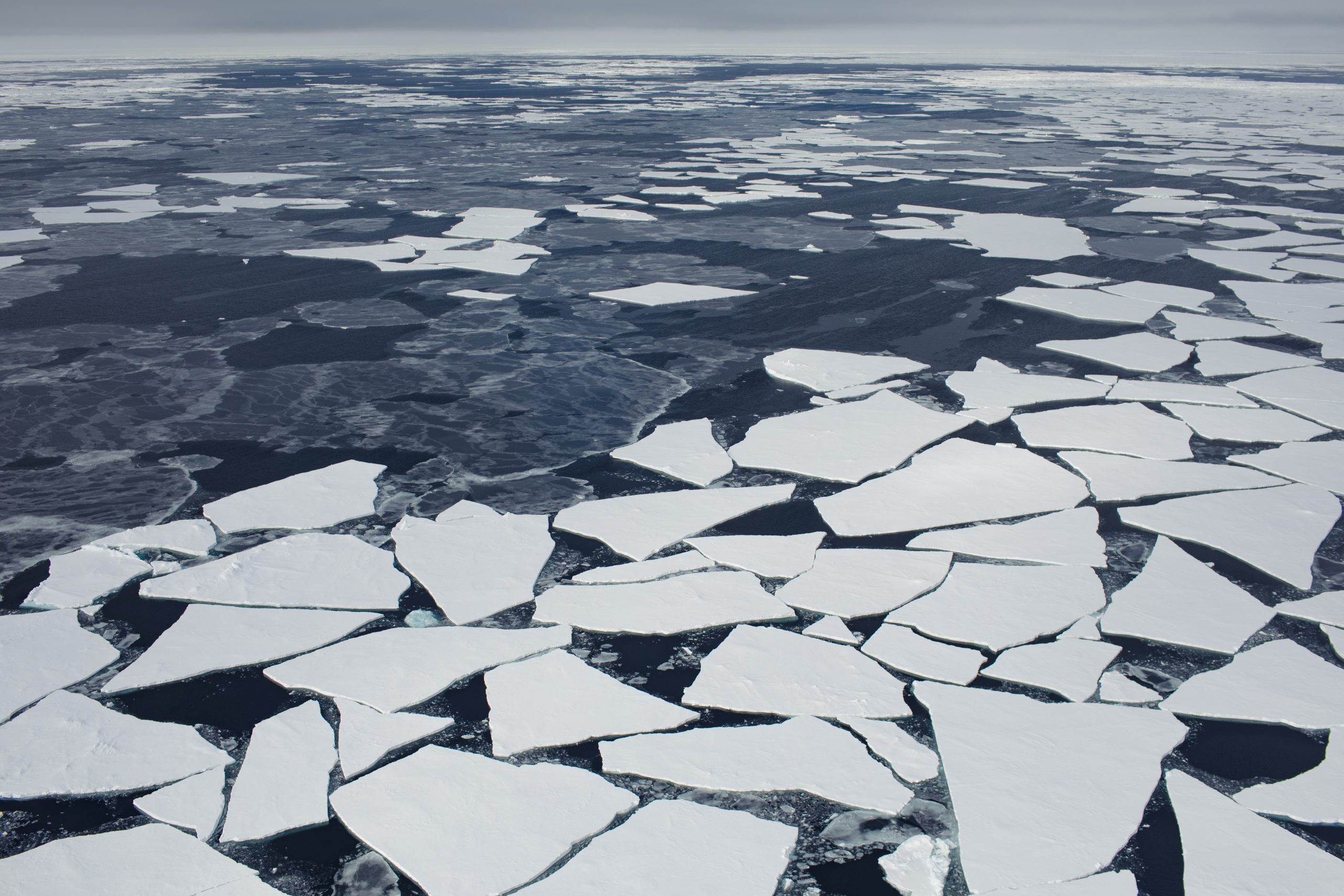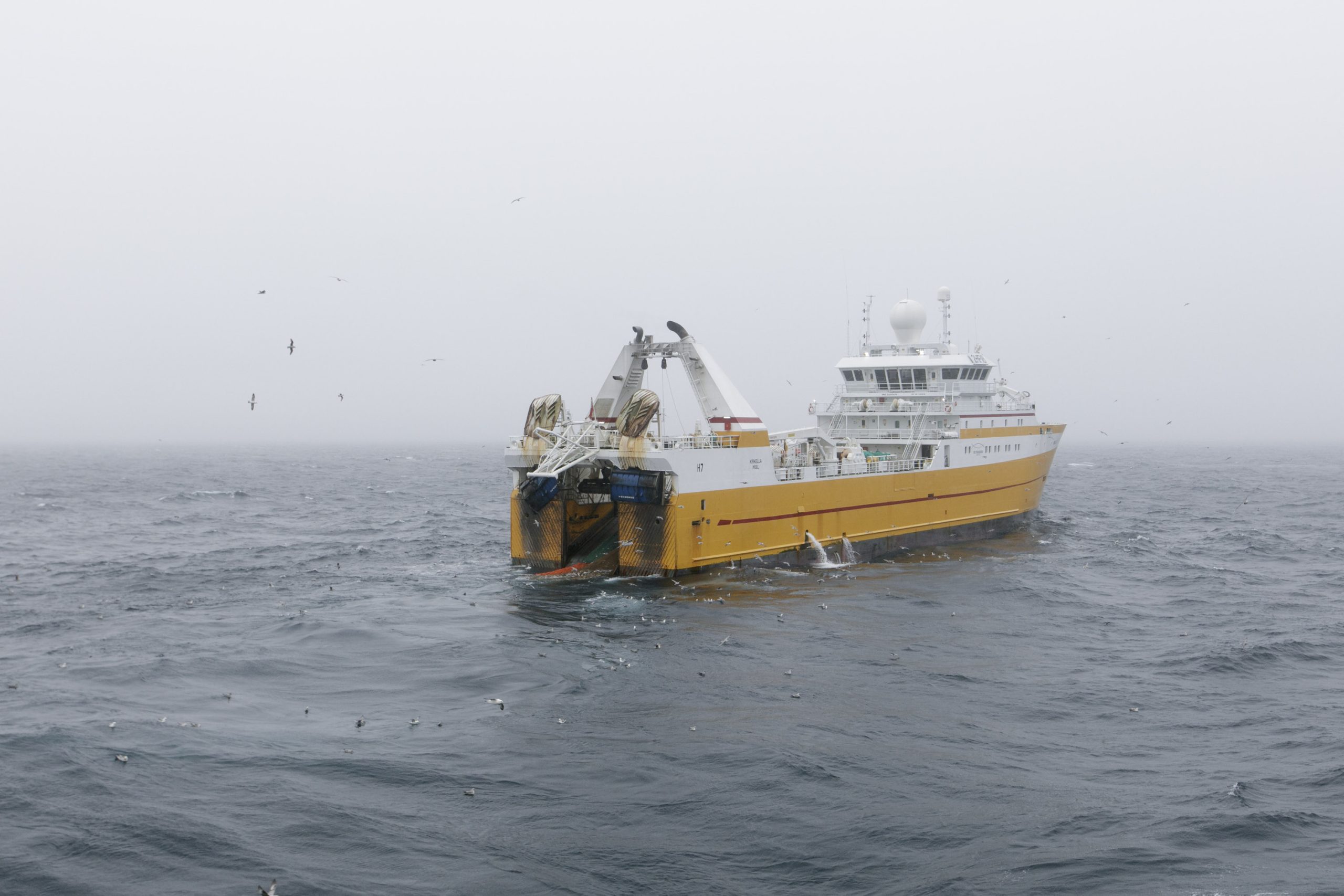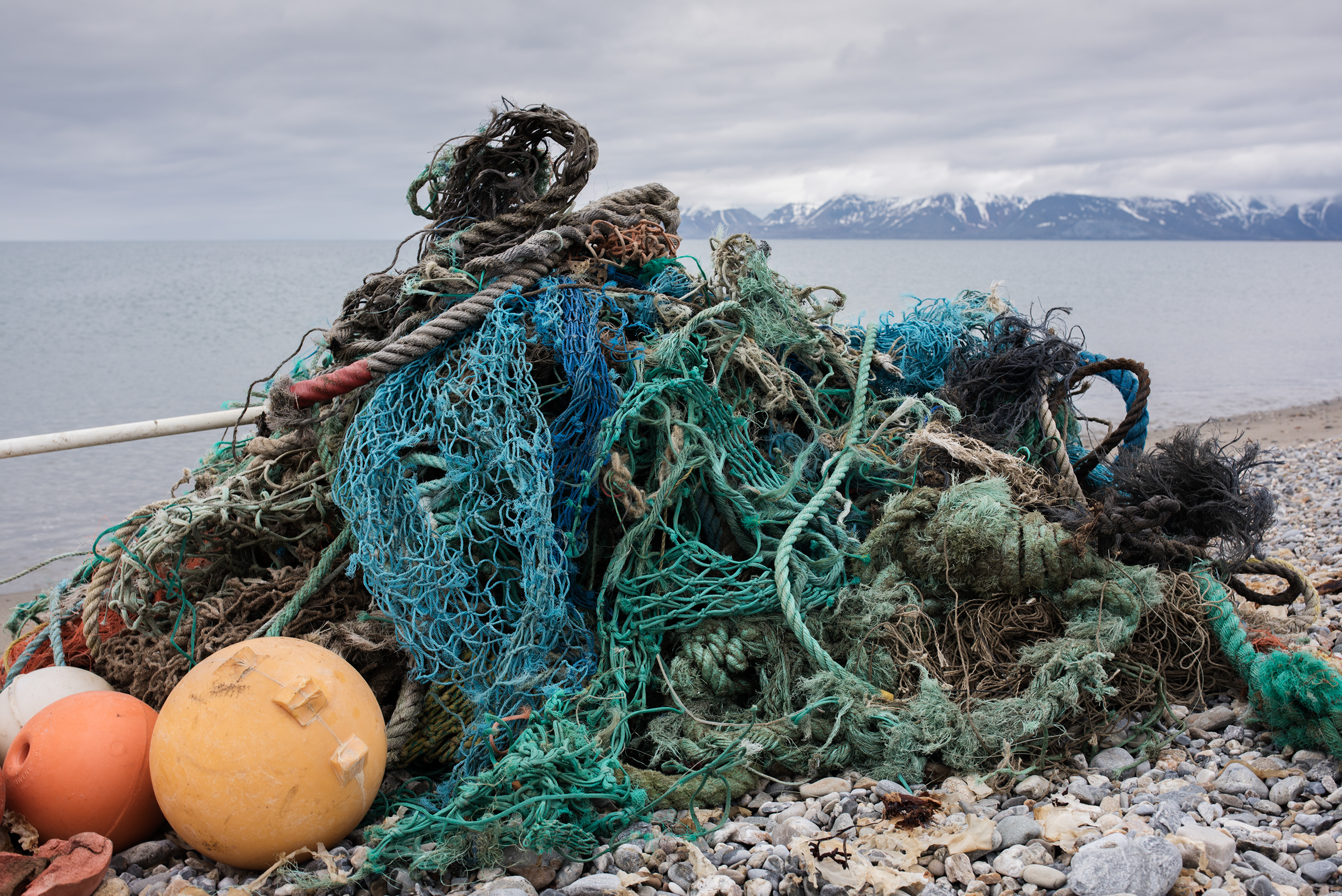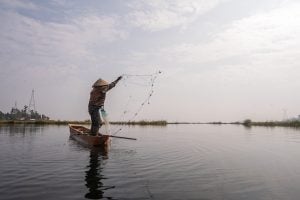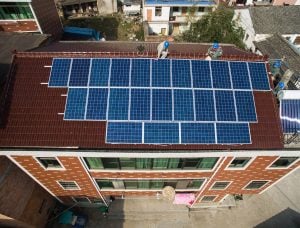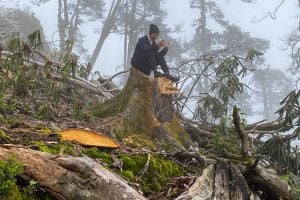Viola “Vi” Waghiyi says her people, the Yupik, have long lived in harmony with the lands and waters around their village on Sivuqaq.
On this piece of the United States between Alaska and Russia’s far east, known as St Lawrence Island in English, “the elders called the Bering Sea our farm”, Waghiyi explains.
But the farm has been less productive recently as sea ice diminishes and the Arctic becomes seasonally navigable.
Walruses and seals, which rely on the ice, are critical to the traditional diet of Arctic Indigenous peoples. Waghiyi’s village of Savoonga sometimes bills itself as the Walrus Capital of the World.
“If there is no ice, our freezers are empty,” she says.
Sea ice in the Arctic waxes and wanes through the year, and is normally at its lowest extent in September, at the end of the summer. Since the first satellite recordings began in 1978, September cover has shrunk at a rate of 12.2% per decade. Amid record-breaking ocean temperatures, last year’s September extent of 4.37 million square kilometres was the fifth lowest on record.
As the sea becomes easier to navigate, more ships are coming to the area, and with them pollution, notably plastic.
“We believe krill have to go deeper into the ocean due to the surface warming, and the fish, who depend on krill, are mistaking microplastics for their food, which then biomagnifies up the food chain,” says Waghiyi, who is environmental health and justice director at the Alaska Community Action on Toxics (ACAT) group and a member of the White House Environmental Justice Advisory Council.
“These plastics are ending up in our bodies due to our reliance on the walrus and seals for sustenance.”
A more open sea
In the last 10 years, the number of vessels sailing within and across the Arctic has increased by 37%, according to a report released this year by the Arctic Council, an intergovernmental forum.
“What we are seeing is not just an increase in the numbers of vessels, but also the amount of time they’re spending sailing in the Arctic as they’ve got access to more of the Arctic Sea resources,” says Sian Prior, lead adviser to the Clean Arctic Alliance, a network of NGOs that campaign for protection of the region.
Advocates for Arctic shipping expansion say that the northern passages between Atlantic and Pacific can cut transport distances between Europe and East Asia by 40%, allowing a reduction in fuel consumption and so greenhouse gas emissions. But sailing what has been called the polar Silk Road “is not a straightforward equation with a 40% shorter route meaning 40% less emissions” as Arctic waters can be difficult to navigate, requiring more fuel, says Prior.
Another problem is that soot from ships’ engines – known as ‘black carbon’ – settles to create a dark layer over the white snow and ice, reducing the already-depleted ice’s ability to reflect sunlight, and so increasing warming. A ban on using or carrying the heavy fuel oil burned by much Arctic shipping is set to come into effect in July 2024 to try and reduce this problem.
Black carbon is just one piece of the Arctic pollution puzzle though.
The Arctic Council says most ships venturing into Arctic waters are fishing vessels attracted to newly ice-free fishing spots. International NGO Global Fishing Watch has been tracking them and says that in recent decades there has been an increase in trawlers venturing north during the summer season, close to the boundaries of the Arctic high seas where fishing is restricted.
“With the warming of the ocean, the schools are moving further north, and the fishermen go where the fish are,” says David Kroodsma, leader of the Global Fishing Watch research and innovation team.
This brings more underwater noise pollution, affecting marine species that rely on sound to communicate, navigate and hunt. It increases the risk of oil spills, which are not easy to clean in the far north and have health impacts on local communities. And it brings more plastic debris.
The plastic toll of fishing
In his over 15 years of work with NGOs on plastic pollution, Arctic researcher Eelco Leemans has seen plenty of waste from fishing boats. “One of the top five items we always find on beaches are pieces of fishing net,” he says. Plastic packaging used to store fish on boats is another frequent find, he adds.
Leemans, who works as a marine consultant, told Dialogue Earth that the problem with litter and fishing boats is twofold.
First, there are problems with waste management. On board, boats do not always have good facilities and may just throw things over the side. On land, the remote setting makes it difficult to provide adequate infrastructure. When entering port, fishers can face high fees to dispose of waste, incentivising disposal at sea.
Secondly there are cultural issues with some fishing communities, which often poorly understand the environmental consequences of their actions, says Leemans.
Evidence on the source of Arctic plastic is difficult to come by as it can be hard to identify the origin of waste, but many experts told Dialogue Earth that discards from fishing boats are a problem.
There are regulations in place to prevent dumping, and educational programmes discouraging it. However, the complex legal status of the region and its marine environment often mitigates against their effectiveness.
“We still see tons of fishing gear and waste washing up on our shores. It’s a huge problem that is not properly addressed and enforced,” says Pamela Miller, executive director and senior scientist at Alaska Community Action on Toxics (ACAT) and co-chair of the International Pollutants Elimination Network (IPEN).
IPEN recently reported that the Arctic contains more plastics than any other ocean basin. “The Arctic is effectively an oceanic gyre and a hemispheric sink for both chemicals and plastics,” says Miller.
Large pieces of plastic trapped in this system gradually degrade into millions of micro- and nano-plastic fragments. Ice crystals store these particles and this frozen waste reservoir is then released annually in spring and summer as temperatures rise and wildlife blossoms.
Marine ecologist Rachel Coppock fears this annual release might accelerate in the future as sea ice further diminishes, releasing past plastic pollution.
Her team at the University of Plymouth studied waste distribution in the Arctic region’s water column and “found the greatest concentrations of microplastics nearest the sea-ice edge or landmass”, says Coppock.
She thinks that, once freed, some of this ocean of microplastics travels back to lower latitudes. But much will remain in the Arctic where it can be eaten by marine organisms already under pressure from climate change.
Indigenous voices call for change
Several voices, many from the Indigenous communities, are pushing to use technology to deal with the plastic problem. Given the difficulty of identifying the source of debris found on beaches, discussions are taking place about labelling fishing gear with boat identities so authorities can punish offenders. Onboard monitoring of ships, including by filming and analysing their fishing, has also been shown to change behaviour.
Plastic pollution has emerged as one of the most pervasive problems affecting the marine environment in recent years. Global efforts on a treaty to put an end to it made only slow progress at the last negotiation meeting in Canada, amid increased industry lobbying. Vast amounts of plastic continue to make their way into the ocean every year.
“Our Arctic Indigenous Peoples Delegation travelled two days to be the conscience of the last treaty negotiations. Our farm, the Arctic Ocean, has the most microplastics of all the oceans on the planet, threatening our existence as Arctic Sivuqaq Yupik People and our future generations,” says Waghiyi. “Most people worldwide want a ban on plastic production. Still, the goal of the petrol-chemical industries to weaken the treaty speaks volumes.”
Waghiyi draws parallels with other global problems such as persistent organic pollutants that were created far away but ended up in the Arctic and have been blamed for increasing health problems in her community.
“The increasing rates of cancer and miscarriage experienced by our communities in the last 50 years are linked with a legacy of toxic contamination and persistent organic pollutants from throughout the globe,” she says. “Now there is a higher concern with microplastics and increasing shipping due to the fast melting of the ice.”
As the Arctic continues to warm, solutions to the linked problems of shipping and pollution are increasingly urgent for local people, their environment and the wider world.

